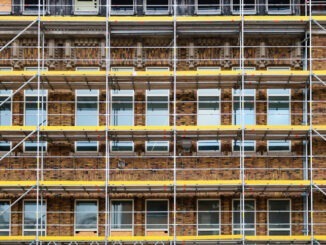
Kevin Parker, senior finance business partner at Greenshaw Learning Trust, delves into the RAAC crisis, offering insights into its origins, subsequent developments, and the essential measures required to avert similar crises in the future
In the days leading up to the start of the current academic year, a significant announcement shook the education sector in England. The UK Government directed over 100 schools, nurseries, and colleges to shut down classrooms and facilities due to the presence of collapse-prone material known as reinforced autoclaved concrete (RAAC).
This number later rose to over 230, with 119 schools needing one or more entire buildings rebuilt or significantly refurbished. That’s over 700,000 pupils learning being impacted. It’s another significant challenge, adding to the long list of obstacles that have impacted the UK Education system over the last decade. Were we lucky to avoid an absolute catastrophe, and did we fail to keep children and staff safe? I’ll let you make up your own mind…
How have we got here?
There are 64,000 school buildings, spread across 20,000 individual schools, many of which are in a long term and increasing state of disrepair. A National Audit Office report states that 38% of England’s 64,000 buildings have now passed their estimated design life (that’s almost 2 in 5 schools!)
In 2005, Tony Blair aimed to rebuild or refurbish every single secondary school in England by 2023, via the £55bn Building Schools for the Future (BSF) programme. This was scrapped in 2010 by then education secretary, Michael Gove. Following this, capital spending in education plummeted from £10bn in 2010/11, to £4.6bn in 2012. In 2023, this figure is approx. £3.5bn, which is £1.8bn less than the minimum amount of annual spend, the DfE recommended to the Government in 2020. Interestingly to note, at least 13 of the RAAC-affected schools had secured BSF rebuild money, before the plug was pulled in 2010!
Where are we now?
The current government pledge is to rebuild and/or significantly refurbish 513 schools over this decade (119 of these are RAAC-affected), plus to conduct more thorough surveys where required. In the period of launch of the Schools Rebuilding Programme (SBP), to mid-2023, just one project had been completed.
It is estimated that just to stand still in the same position, this needs to be between 300-400 schools per year, and an estimated £15bn to just make schools safe. Currently, there is £1.8bn committed for 2023-24.
Where can we go?
Moving forward, a fit for purpose school estate, with sustainability at its heart, is possible, with a long-term strategy and proper financing. It should be the absolute minimum standard to ensure all pupils and staff are safe when at school.
There are, however, some green shoots of optimism, that progress is being made.
In November 2021, the DfE released building specifications, that means all new DfE delivered buildings are built to be energy efficient, and net zero ready, therefore more resilient to climate change. The first net zero school, Treetops in Essex, opened in August 2022.
In April 2022, the DfE published the ‘Sustainability and Climate Change Strategy’. This has an overarching ambitious vision that the UK education sector would be a world leader in sustainability and climate change by 2030. Closely following this documents release, was a £447 million investment, aimed at support schools with energy reduction measures.
The strategy of sustainability document sets out an ‘innovate, test and invest’ approach to learn what works, delivers the greatest impact, and represents the best value for money in meeting the challenge of retrofitting the education estate.
Alongside all of this, there’s an urgent need for proper funding allocation and swift action to resolve the situation in the most severely affected schools and areas. Equally important is the development of a comprehensive plan to prevent such crises in the future, while also fostering learning environments that ignite inspiration for all students.
Kevin Parker All views are my own, and do not reflect those of my employer.



Be the first to comment